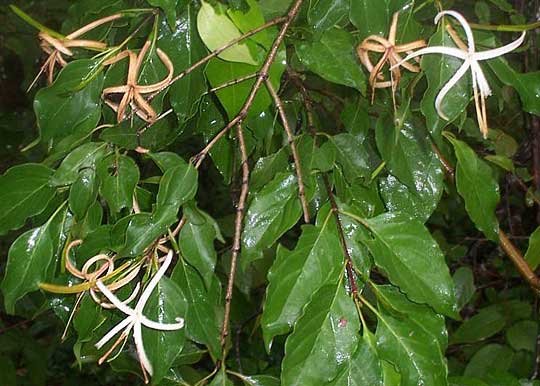Excerpts from Jim Conrad's
Naturalist Newsletter
from the September 7, 2007 Newsletter issued from Sierra Gorda Biosphere Reserve, QUERÉTARO, MÉXICO
PRINCEWOOD FLOWERING
Along the reservoir road one of the prettiest and most conspicuous trees flowering now is the one shown below:

That's Princewood, EXOSTEMA CARIBAEUM. You can see that the white, starlike flowers with long, curling petals make the plant so striking -- especially during this week's somber, rainy days. It's unusual how the flowers stay white only briefly, then turn brown and the brown flowers hang on for so long. Also noteworthy are the long, slender, curved flower buds, one of which can seen in the picgure's lower left corner.
Princewood is a member of the same family as the coffee plant, the Rubiaceae. If you think about it, the dark green, leathery leaves arising two at each stem node and the white flowers are just like coffee plants.
My Plantas Medicinales de Mexico, which calls the tree Copalchi, says that here Princewood bark has been used traditionally against malaria. Modern research has confirmed that, at least in the test tube, bark extracts do show antimalarial effects. Other research has found that stem and bark extracts show "significant hypoglycemic and antihyperglycemic effects," like the above Yellow Bells.
Princewood grows naturally only in Mexico, the Caribbean and southern Florida. In Florida it's listed as an endangered species.